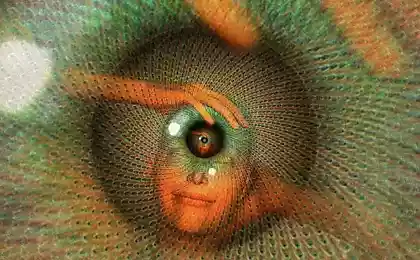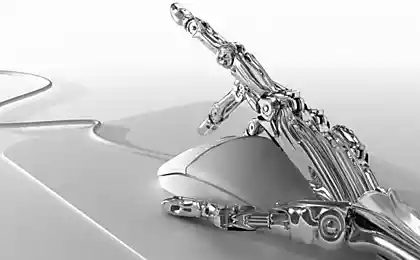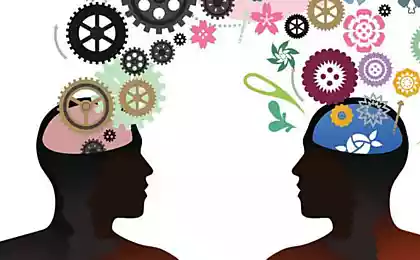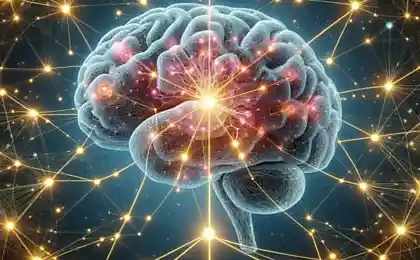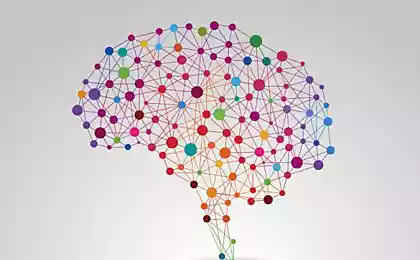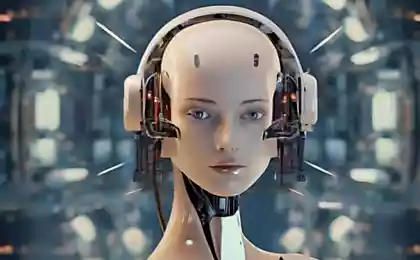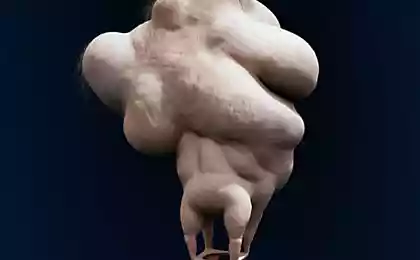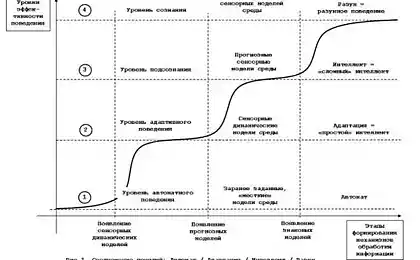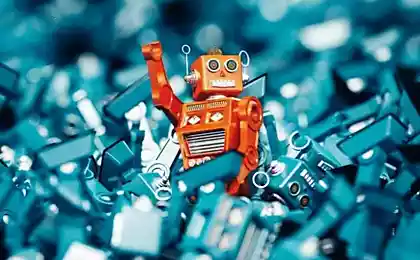744
The scientists are different from ordinary people, but the intellect
It is clear that scientists are superior to people of average intelligence of the citizens. But the interests of another question: How does this intelligence, that is, what other aspects of life are different from smart people stupid? Исследование, spent at the University of Michigan, allows to draw some conclusions.
The aim of the study was to compare the usual audience of the US population with scientists (members of society Sigma Xi). In turn, the scientists compared normal with members of the National Academy of Sciences, that is, with outstanding representatives of science, and Nobel Prize winners, of which can be considered geniuses.
The study's authors tracked how to increase intelligence changes related to crafts and "humanitarian" hobbies: Manual labor, hobby, painting, literature, photography, writing music, theatrical performances, etc.
Sigma Xi - a professional company, which has the right to enter any scientist or engineer. Hobbies determined by personal data.
For information about hobbies outstanding scientists and Nobel laureates were taken from autobiographies and articles about them. It counts only those cases where the text explicitly stated that a scientist engaged in a particular activity. For example, it plays a particular musical instrument. Phrases like "a great lover of music" were not considered.
So, with a certain degree of conditionality we get a number: an ordinary man - the usual scientist - an outstanding scientist - a genius. In this series, each stage sampling increases average intelligence. What changes more?
First, here's a chart that shows the differences between scientists from the average of the population. Percentage indicates how many representatives of the sample is interested in arts, crafts, music, performances in public (perfomance), photography, literary activities.
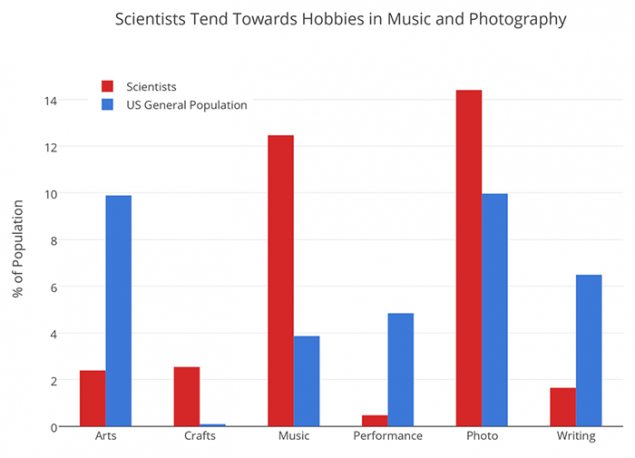
The difference is quite serious. Scientists are three times more prone to game playing music than ordinary people. They are a little more likely addicted to photography. The most typical hobby scientists, which distinguishes them from ordinary people - manual labor as a hobby, skill, making all sorts of crafts (crafts). There intellectuals in the order of magnitude of ordinary people.
There are several areas that people with higher intelligence involved is less than the general public. This art (painting pictures, etc.), Literary work (writing poems and so on.), And especially in public speeches. Somehow conventional scientists did not like to go on stage as an actor, but like a lot of average people.
However, if you add a selection of Nobel laureates, the picture changes dramatically. It turns out that men of genius dramatically increases the propensity to almost all types of non-core activities, including the same literary work, in public performances, painting pictures and stuff. In this sense, men of genius - is uniquely versatile person who is literally addicted to everyone. A musical instrument played by literally every fourth Nobel laureate!
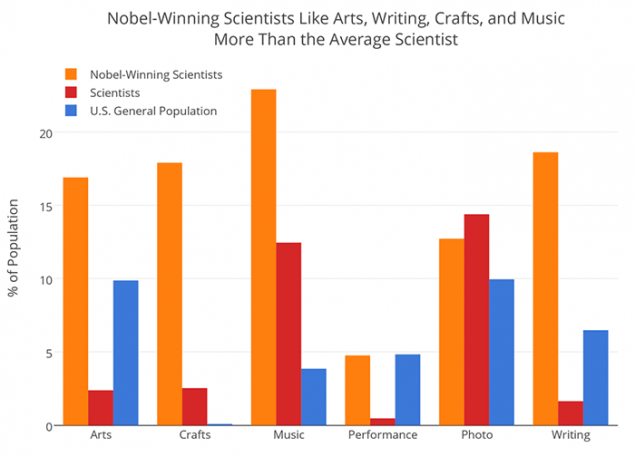
If the fully averaged all the arts and hobbies, the paradoxical picture. The average scientist is virtually identical to the average person. But the more talented a person is, the more likely he manifested any extraneous interests.
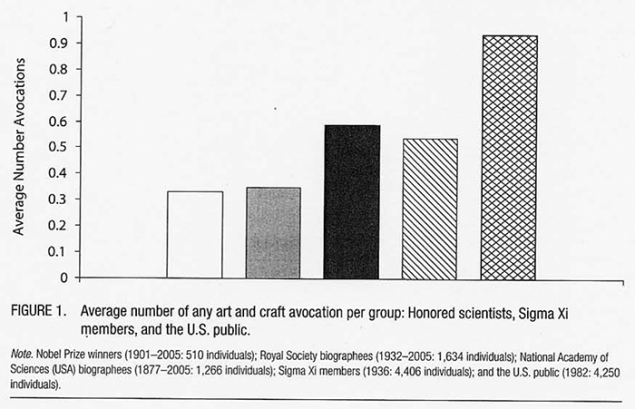
Such research is carried out not for the sake of curiosity, and to improve the efficiency of research activities. For example, specialists in cognitive science has recently prepared a report «two-way process of thinking for scientists» («Dual thinking for scientists» ), which try to formulate the value of the so-called left and right hemispheres in scientific activities. In their terminology, for physiological reasons, each person thinking occurs in two ways: "fast" and uncontrolled unwitting "first system" is responsible for intuition, but slow "second system" conscious thought responsible for reasoning and logic. According to experts, the scientists used to always using the second system. At the same time, the first system can help greatly.
In other words, using associative thinking, illogical at first glance intuitive actions can sometimes make important scientific discoveries and find a creative solution to a scientific problem. In the history of science many examples that prove this.
Indicative thing happened with the German chemist Friedrich August Kekule, who could not understand the structure of the benzene molecule with the "wild" formula C 6 sub> H 6 sub>. One day, he fell asleep in a chair before the fire - and he dreamed of a snake that bites its own tail. Scientist woke up with a brilliant idea that a molecule of benzene is minimized in the ring! Previously, no one could have predicted this.
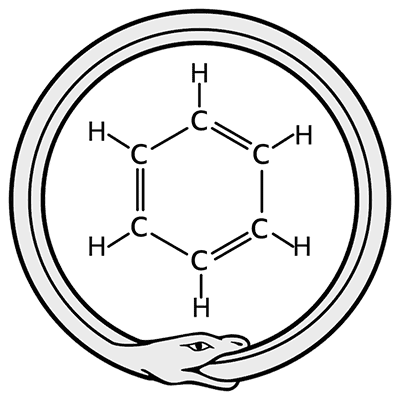
To improve the effectiveness of scientists and experts recommend people to creative mental labor practice actions that side look like procrastination. For example, aimless walks (preferably not planning a route in advance), a hobby, taking a bath, excess sleep and so on.
Source: geektimes.ru/post/262360/
The aim of the study was to compare the usual audience of the US population with scientists (members of society Sigma Xi). In turn, the scientists compared normal with members of the National Academy of Sciences, that is, with outstanding representatives of science, and Nobel Prize winners, of which can be considered geniuses.
The study's authors tracked how to increase intelligence changes related to crafts and "humanitarian" hobbies: Manual labor, hobby, painting, literature, photography, writing music, theatrical performances, etc.
Sigma Xi - a professional company, which has the right to enter any scientist or engineer. Hobbies determined by personal data.
For information about hobbies outstanding scientists and Nobel laureates were taken from autobiographies and articles about them. It counts only those cases where the text explicitly stated that a scientist engaged in a particular activity. For example, it plays a particular musical instrument. Phrases like "a great lover of music" were not considered.
So, with a certain degree of conditionality we get a number: an ordinary man - the usual scientist - an outstanding scientist - a genius. In this series, each stage sampling increases average intelligence. What changes more?
First, here's a chart that shows the differences between scientists from the average of the population. Percentage indicates how many representatives of the sample is interested in arts, crafts, music, performances in public (perfomance), photography, literary activities.

The difference is quite serious. Scientists are three times more prone to game playing music than ordinary people. They are a little more likely addicted to photography. The most typical hobby scientists, which distinguishes them from ordinary people - manual labor as a hobby, skill, making all sorts of crafts (crafts). There intellectuals in the order of magnitude of ordinary people.
There are several areas that people with higher intelligence involved is less than the general public. This art (painting pictures, etc.), Literary work (writing poems and so on.), And especially in public speeches. Somehow conventional scientists did not like to go on stage as an actor, but like a lot of average people.
However, if you add a selection of Nobel laureates, the picture changes dramatically. It turns out that men of genius dramatically increases the propensity to almost all types of non-core activities, including the same literary work, in public performances, painting pictures and stuff. In this sense, men of genius - is uniquely versatile person who is literally addicted to everyone. A musical instrument played by literally every fourth Nobel laureate!

If the fully averaged all the arts and hobbies, the paradoxical picture. The average scientist is virtually identical to the average person. But the more talented a person is, the more likely he manifested any extraneous interests.

Such research is carried out not for the sake of curiosity, and to improve the efficiency of research activities. For example, specialists in cognitive science has recently prepared a report «two-way process of thinking for scientists» («Dual thinking for scientists» ), which try to formulate the value of the so-called left and right hemispheres in scientific activities. In their terminology, for physiological reasons, each person thinking occurs in two ways: "fast" and uncontrolled unwitting "first system" is responsible for intuition, but slow "second system" conscious thought responsible for reasoning and logic. According to experts, the scientists used to always using the second system. At the same time, the first system can help greatly.
In other words, using associative thinking, illogical at first glance intuitive actions can sometimes make important scientific discoveries and find a creative solution to a scientific problem. In the history of science many examples that prove this.
Indicative thing happened with the German chemist Friedrich August Kekule, who could not understand the structure of the benzene molecule with the "wild" formula C 6 sub> H 6 sub>. One day, he fell asleep in a chair before the fire - and he dreamed of a snake that bites its own tail. Scientist woke up with a brilliant idea that a molecule of benzene is minimized in the ring! Previously, no one could have predicted this.

To improve the effectiveness of scientists and experts recommend people to creative mental labor practice actions that side look like procrastination. For example, aimless walks (preferably not planning a route in advance), a hobby, taking a bath, excess sleep and so on.
Source: geektimes.ru/post/262360/
1 exercise is beneficial for children at any age
Electronic Camera withdrew the motion of atoms in real time


